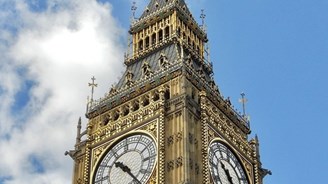Investment property gains/losses - do they show a true and fair view?

If an investment property is held at fair value and accounted for under section 16 of FRS 102 then we need to consider what happens to any gains or losses that are made when fair valuing the asset at the end of the reporting period.
Under SSAP 19 these were accounted for as unrealised gains and losses and we took these to an investment revaluation reserve on an individual investment property basis. In particular para 13 required that these changes were not taken to profit and loss but shown through the statement of total recognised gains and losses (except when the changes were expected to be permanent in which case they were taken to profit and loss - such as an impairment). The big headline change to FRS 102 is that changes in fair value go through profit or loss and as such will show much greater volatility within the profit and loss account than previously seen.
What must remain clear however is that these revaluations are not realised gains or losses and must not be treated as such from a Company Law perspective. Entities must separate out distributable and non-distributable reserves in order to comply with the Companies Act 2006. ICAEW Technical Release 02/10 makes it abundantly clear that increases in fair value of investment property are not to be treated as a realised profit. So entities will need to keep a track of distributable reserves in order to prove whether they are making lawful dividends or not. From a practical point of view, firms may set up a separate TB code to identify all of the investment property gains and losses or they may choose to identify these through their statutory accounts. Para A4.28 of Appendix IV in FRS 102 states that presenting fair value movements that are not distributable profits in a separate reserve may assist with the identification of profits available for that purpose and to me, this seems like a sensible starting place. This should not be a revaluation reserve (as this is a specific reserve under Company Law) but either labelled as a separate reserve or a non-distributable profit reserve. The accounting policy should state what is recorded in such a reserve (eg. fair value changes in investment properties are recorded in the non-distributable profit reserve).
It is perhaps worth mentioning that gains and losses on investment properties shown through profit and loss would not be taxable for corporation tax.
These are the types of issues that clients will need to know about as they will impact previously reported profit or losses and could potentially covenants on external financing could be affected Upfront consideration of the impact on profits and thus any covenants must be performed prior to transition and any issues dealt with to those providing external finance.
True and fair override
Under SSAP 19, the use of measuring investment property at market value and not depreciating the asset was a departure from para 18 of Schedule 1 in SI 2008/410 which requires the depreciation of fixed assets with limited useful economic lives. This departure from legislative requirements was deemed necessary to show a true and fair view and as such this was disclosed as such. However, the move to accounting for investment properties at fair value with changes through the profit and loss account means we are now applying the 'fair value' and not the 'alternative' rules. The movement in fair value is now reflected in the profit and loss account thus not requiring a depreciation charge. As such no 'true and fair' override disclosure is required because they are already showing a true and fair view!
I have now considered the accounting and legal differences for the fair value model above without considering deferred tax. So my next blog post on investment properties will cover the controversial topic of deferred tax!




